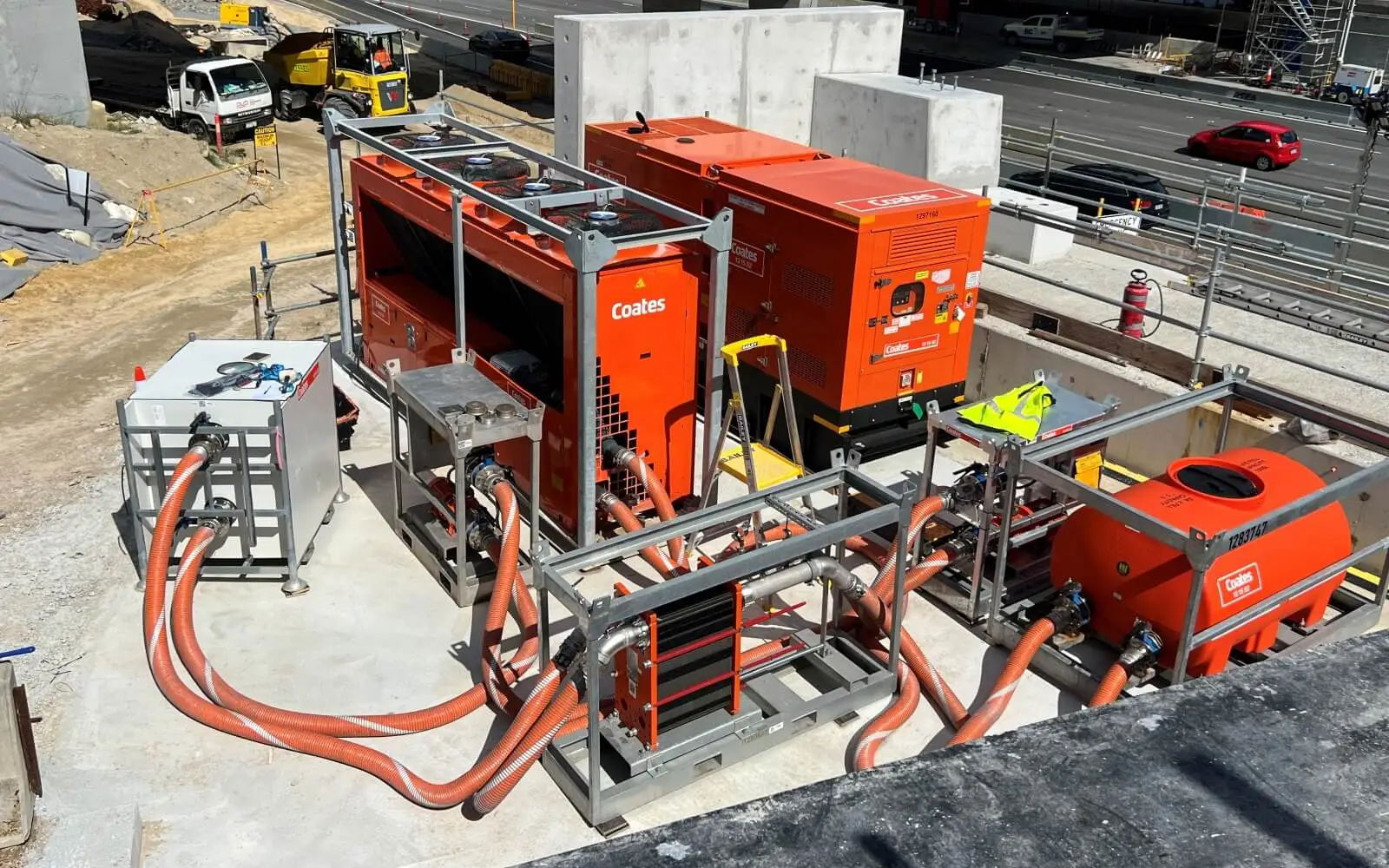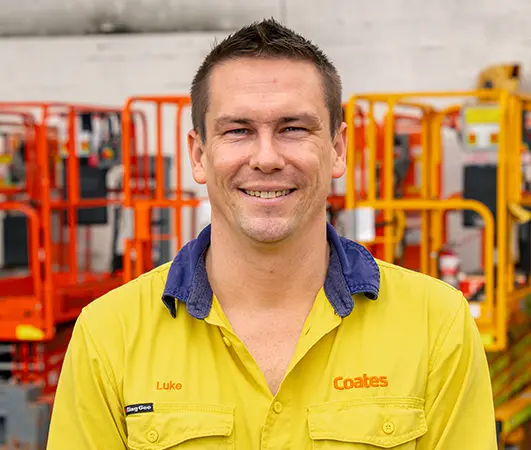Innovative cooling system cuts cost and accelerates construction of two new Perth bridges
Find out how a bespoke cooling solution from Coates helped a major infrastructure project to cure concrete more efficiently
The project
Phase 2 of the Stephenson Avenue Extension in Perth is underway – a major infrastructure upgrade designed to improve freeway connectivity for Stirling and surrounding areas.
Main Roads awarded an alliance contract to S2M Evolution Alliance, comprising of Acciona and WSP, in late 2021. The scope of works includes constructing a new grade-separated interchange over Mitchell Freeway and the Yanchep train line; a new bridge connecting Cedric Street with Scarborough Beach Road; and upgrading the Stirling Bus Interchange from an 18-stand to a 29-stand facility with a new bridge.
“To limit the impact of bridge construction on commuters, the Alliance is required to launch, slide and lower pre-formed, reinforced concrete segments over the freeway and train line in live traffic conditions,” says Matt Baston, Launch Manager - Structures, S2M Evolution Alliance. “This is the first use of this construction method for a bridge in Perth. To achieve this, there were a number of unique concrete challenges to overcome.”
In July 2024, Coates was approached to design and implement a bespoke concrete cooling system.
“We chose Coates to support this project for the breadth of experience they bring and their reputation for developing innovative solutions to complex problems,” Matt continues. “We also value their willingness to lend time and expertise talking through technical challenges, even if it doesn't result in a hire outcome.”
The challenge
As well as needing to achieve a complex construction method, this project is made more challenging by the need to:
- Perform a large number of high-volume in-situ concrete pours
- Quickly and consistently cure bridge segments that reach a thickness of up to 1.8m
- Work with high-strength S60 grade concrete
To ensure the strength and integrity of the bridge structures, Main Roads set strict parameters for curing the concrete. Concrete temperature must remain below 70°C, with a differential of less than 20°C.
“Concrete with a high cement content produces substantial heat, which made working with the specified S60 concrete and managing temperature as it cooled particularly challenging,” says Shane Lee, Power & HVAC Solutions Specialist, Coates. “The Alliance needed an effective cooling system to meet the project requirements, ensuring the concrete cured evenly, preventing cracking and achieving the large concrete spans.”
The solution
Strategies to help manage the concrete temperature include scheduling pours at night when the ambient temperature is lower, applying thermal wrapping to poured segments, and delivering the concrete with ice. A bespoke concrete cooling solution designed by Coates played an equally important part in keeping the concrete temperature within the required range, utilising:
- 2 x 200kW chillers set to run at 8°C
- 2 x plate heat exchangers
Pumps and buffer tanks to draw water through the bridge segments and plate heat exchangers
“We worked closely with the customer to design a solution that carefully controls the concrete temperature,” says Shane. “This system pumps chilled water through polyurethane pipes installed in each concrete segment, allowing the concrete to cure more rapidly and evenly.”
“Having a closed loop on the chiller is key to the efficiency of this design,” says Matt. “Adding a plate heat exchanger also minimises the impact of high return temperatures and improves the efficiency of cooling incoming fluid.”

Coates’ bespoke cooling system combined chillers, heat exchangers, pumps and buffer tanks
The impact
Coates’ cooling solution, coupled with careful placement temperatures at night, has resulted in compliant concrete pours. The system saves approximately 1.5 days for each of the 30 launch cycles, resulting in a 13% reduction in time.
Engineering expertise
To achieve maximum heat transfer, water must be pumped through the cooling system at a precise temperature and flow rate. Coates Engineering Solutions worked closely with the Alliance to determine this approach.
“A combination of factors controls how quickly heat escapes from the concrete, including the concrete grade and the thermal density of the polypipe in each segment. We use detailed modelling and calculations to achieve the right water temperature and to determine the speed at which it must flow through the system,” says Matt. “With additional input and expertise from Coates, we could trust these calculations to make informed decisions on the design of the cooling system and the equipment we needed to implement it.”
Cost and efficiency
Coates’ innovative concrete cooling system is helping the Alliance to achieve a 10% reduction in concrete curing time, which also has a positive impact on the launch schedule for each bridge segment. “By the time the second pour was complete, the time saving had already offset the cost of hiring the system,” says Shane.
Matt describes Coates’ cooling system as critical to meeting the project requirement. “Even if temperature wasn’t a factor, this system still delivers considerable value to any project that requires a large volume of concrete to be quickly, safely and consistently cured,” he says.
Timely and responsive support
It took just three weeks from the initial customer conversation to design and implement the bespoke cooling solution, made possible by close collaboration between the Coates Power & HVAC and Coates Engineering Solutions teams, along with its large national fleet.
Meeting the ongoing requirement for maintenance and repairs is critical to project success, particularly with tight parameters. “Coates was on site for the first two pours to make sure the solution performed as expected,” says Shane.
With the system now up and running, Coates continues to make its team available when required, providing the assurance of a solution that continues to perform and the confidence that comes with a high level of support.
Contact Coates to discover how our specialist solutions can support the delivery of your next major project










